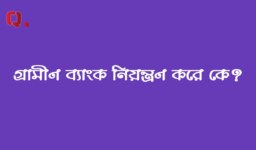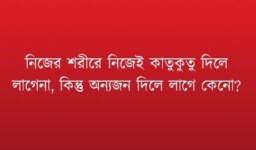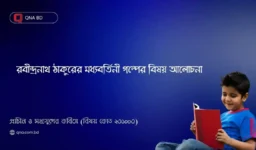1. Warm up activity:
□ In the class, give a talk on what you know about Baul / Bhatiyali / Bhawaia songs of Bangladesh.
□ Request someone in the class to sing a few lines of a folk song; four of you should then talk on the theme, lyrics, style and impact of the song.
2. Here is an excerpt on Bengali Folk Music written by the late Mridul Kanti Chakravarty, who was an expert in music and also sang Baul songs. We reproduce the excerpt published in Banglapedia, courtesy of the Asiatic Society of Bangladesh. Read the excerpt and answer the questions that follow:
Folk music consists of songs and music of a community that are uninfluenced by any sophisticated musical rules or any standard music styles. Bangladesh has a heritage of rich folk music which includes both religious and secular songs.
Folk music may be described as that type of ancient music which springs from the heart of a community, based on their natural style of expression uninfluenced by the rules of classical music and modern popular songs. Any mode or form created by the combination of tune, voice and dance may be described as music. Thus, the combination of folk song, folk dance and folk tune may be called folk music. For example, Baul songs are a combination of tune, music and dance.
Folk music has the following characteristics: (i) It is composed by rural folk on the basis of ancient rules transmitted orally; (ii) These ancient rules of music have not been influenced by classical or modern music; (iii) Folk songs may be sung in groups or individually; (iv) No regular practice is required for folk music; (v) It is composed and performed by illiterate or semi-literate people; (vi) It is a spontaneous expression in easy language, local dialect, and simple tune; (vii) Both words and tune are appealing; (viii) despite its universal appeal it uses local dialect; (ix) It depends upon nature and the rural environment; (x) It is an explicit manifestation of the joys and sorrows of daily life; (xi) It uses simple and natural rhythms; (xii) It contains a strong emotive expression of human love and separation.
In Bangladesh folk music has great variety, with songs being composed on the culture, festivals, views of life, natural beauty, rivers and rural and riverine life. These songs are also about social inequality and poverty, about the material world and the supernatural. Mystical songs have been composed using the metaphors of rivers and boats. Since the country is basically riverine, the Bhatiyali forms an important genre of folk music. Folk music is formed and develops according to the environment. Differences in the natural environment are reflected in the people of the different regions. The dialects too vary across the different regions. Bangladeshi folk music therefore varies from region to region. Thus there are the northern Bhawaiya, the eastern Bhatiyali and the southwestern Baul songs.
The culture and the lifestyle of the different tribes have also influenced folk music. Tribes like the Santal, Garo, Hajong, Chakma, Manipuri, Tripuri, Manna etc. have interacted with ethnic Bengali culture and lifestyle over the years. The interaction has been clearly reflected in the richness of folk music.
Folk songs may be sung individually or in chorus. Folk songs sung individually include Baul, Bhatiyali, Murshidi and Marfati, while songs sung in chorus include Kabigan, Leto, Alkap and Gambhira. Some songs are regional in character, but others are common to both Bangladesh and West Bengal. Similarly, some songs belong distinctively to one religious community, Hindu or Muslim; others cross religious boundaries. Some songs belong exclusively to men, others to women, while some are sung by both men and women. Thus only women compose and sing Bratagan and Meyeli Git, but both men and women participate in the Toof-beating’ songs that are sung while beating down and firming rooftops.
Different folk songs belonging to different regions of Bangladesh are listed below:
Baul and spiritual songs : Birbhum and Kushtia
Jarigan : Dhaka, Mymensingh, Sylhet, Faridpur, Murshidabad.
Bhawaiya : Cooch Bihar, Rajshahi, Dinajpur, Rangpur, Pabna.
Gambhira : Rajshahi, Malda.
Wedding songs : all regions.
Roof-beating songs : the northern regions of Bangladesh.
Sari : the lower marshy regions of Sylhet and Mymensingh.
Bhatiyali : nearly all regions of Bangladesh.
Pastoral songs : Dhaka, Mymensingh, Faridpur, Sylhet, Habiganj.
3. Answer the following questions:
a. How is folk music defined in the excerpt? Can you add some thoughts of your own to the definition provided?
b. What are the characteristics of folk music?
c. According to the excerpt, folk music has great variety in Bangladesh. What are some other varieties of folk music that you know about? Which aspects of our folk music do you like?
d. The excerpt suggests that the culture and lifestyle of the different tribes of our country have influenced folk music. Can you give some examples in support of the observation? How many tribes or ethnic groups have been mentioned in the excerpt?
e. The excerpt mentions several types or classes of folk songs from different regions of Bangladesh. How many of these are you familiar with? Give a brief assessment of them.
4. Look up the meanings of the following words and terms in the dictionary and write sentences using them:
a. classical
b. mystical
c. note
d. tempo
e. rhythm
5. According to the excerpt, music is a mode or form created by the combination of tune, voice and dance. Is this a complete description, or may you add anything more to the description?
6. Explain briefly what the following terms mean:
a. classical music
b. riverine life
c. regional character
d. lifestyle
e. chorus
7. Find the noun forms of the following verb words:
a. describe
b. transmit
c. compose
d. vary
e. interact
f. reflect
8. Find at least five adjective words used in the text and make sentences with them.



Leave a comment